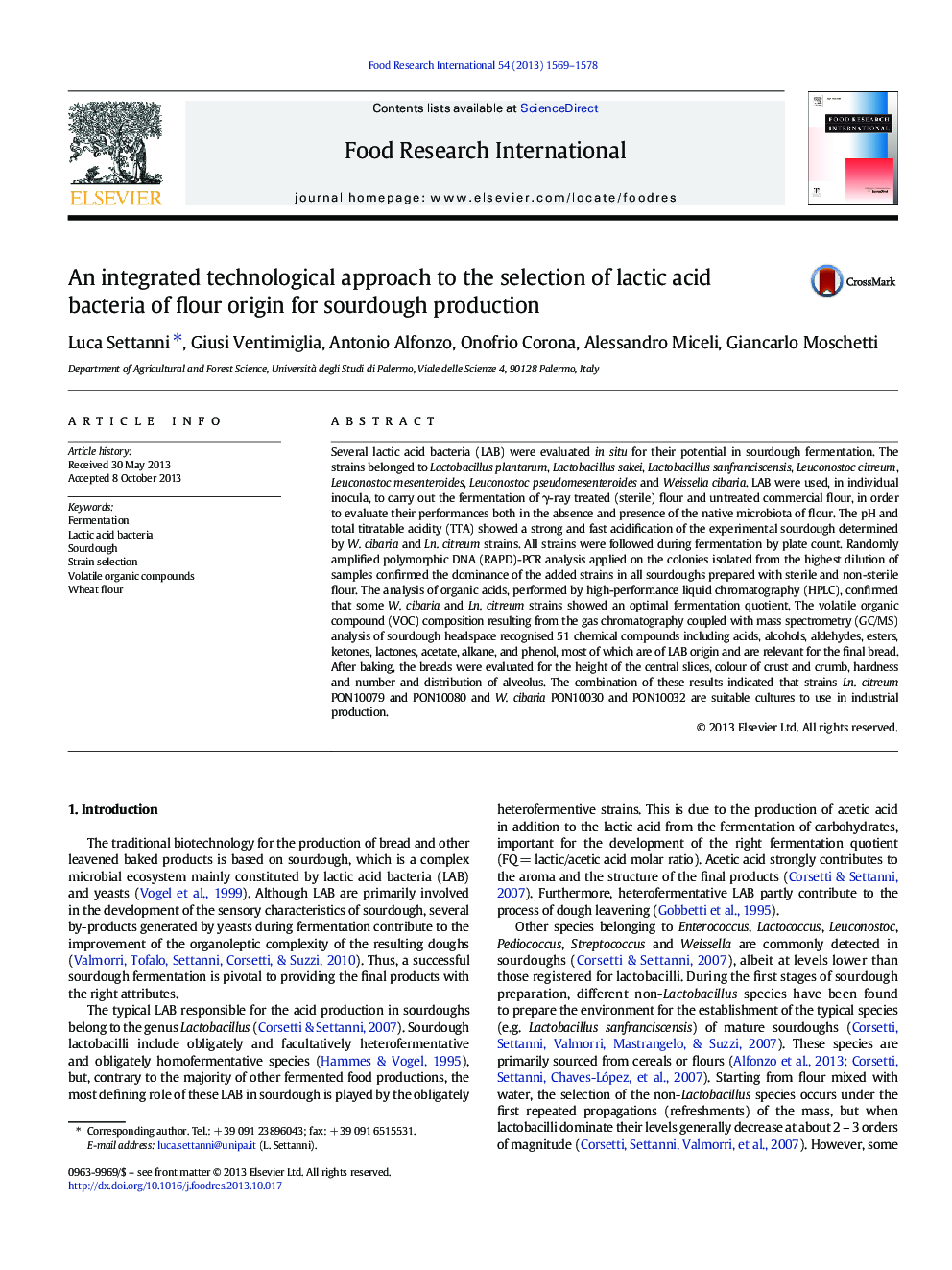| کد مقاله | کد نشریه | سال انتشار | مقاله انگلیسی | نسخه تمام متن |
|---|---|---|---|---|
| 6397361 | 1330675 | 2013 | 10 صفحه PDF | دانلود رایگان |
- Flour lactic acid bacteria (LAB) acidified experimental sourdoughs.
- RAPD-PCR allowed the monitoring of LAB during fermentation.
- Production of lactic and acetic acid and volatile compounds differed among LAB.
- Image analysis indicated the strains with optimal characteristics.
- Weissella cibaria and Leuconostoc citreum showed the best technological aptitudes.
Several lactic acid bacteria (LAB) were evaluated in situ for their potential in sourdough fermentation. The strains belonged to Lactobacillus plantarum, Lactobacillus sakei, Lactobacillus sanfranciscensis, Leuconostoc citreum, Leuconostoc mesenteroides, Leuconostoc pseudomesenteroides and Weissella cibaria. LAB were used, in individual inocula, to carry out the fermentation of γ-ray treated (sterile) flour and untreated commercial flour, in order to evaluate their performances both in the absence and presence of the native microbiota of flour. The pH and total titratable acidity (TTA) showed a strong and fast acidification of the experimental sourdough determined by W. cibaria and Ln. citreum strains. All strains were followed during fermentation by plate count. Randomly amplified polymorphic DNA (RAPD)-PCR analysis applied on the colonies isolated from the highest dilution of samples confirmed the dominance of the added strains in all sourdoughs prepared with sterile and non-sterile flour. The analysis of organic acids, performed by high-performance liquid chromatography (HPLC), confirmed that some W. cibaria and Ln. citreum strains showed an optimal fermentation quotient. The volatile organic compound (VOC) composition resulting from the gas chromatography coupled with mass spectrometry (GC/MS) analysis of sourdough headspace recognised 51 chemical compounds including acids, alcohols, aldehydes, esters, ketones, lactones, acetate, alkane, and phenol, most of which are of LAB origin and are relevant for the final bread. After baking, the breads were evaluated for the height of the central slices, colour of crust and crumb, hardness and number and distribution of alveolus. The combination of these results indicated that strains Ln. citreum PON10079 and PON10080 and W. cibaria PON10030 and PON10032 are suitable cultures to use in industrial production.
Journal: Food Research International - Volume 54, Issue 2, December 2013, Pages 1569-1578
